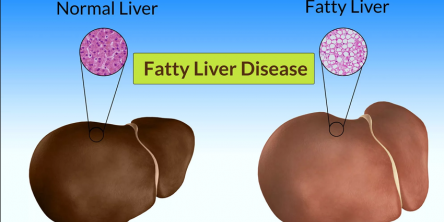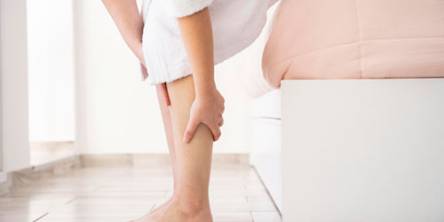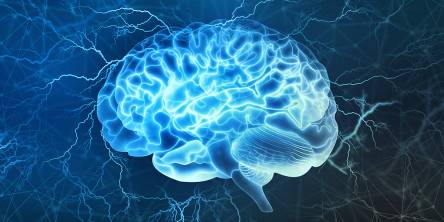Thoracic Herniated Disc: Symptoms and Treatment

According to the American Association of Neurological Surgeons, approximately 75%-85% of Americans have back discomfort at some point in their lives. Upper back pain is commonly caused by small injuries such as muscle strain, sprain, bad posture, inappropriate lifting, or twisting, although it is not always caused by a herniated disc.
A thoracic herniated disc is much less likely to occur than a lumbar (lower back) or cervical (neck) herniated disc due to the thoracic spine's stiffness and the thoracic vertebrae's size. They can, however, occur.
Thoracic Herniated Disc Symptoms
Pain is the most prevalent sign of a thoracic herniated disc. A herniated disc in the thoracic spine can cause pain in the mid-back, unilateral or bilateral chest wall, or abdominal areas around the damaged vertebrae. If the lower thoracic region is implicated, pain may radiate to one or both lower extremities.
Numbness, tingling, or muscle weakness in one or both lower extremities are other possible symptoms.
Radiculopathy
Radiculopathy — pain that radiates down the nerve and away from the spine — can occur if the herniation compresses a thoracic spinal nerve. If you have a thoracic herniated disc, you may have pain, numbness, and tingling around your rib cage or upper abdomen.
A large herniated disc can compress the spinal cord within the spinal canal, causing numbness, tingling, or weakness in one or both legs, as well as bowel and bladder dysfunction and, in severe cases, paralysis.
The most prevalent causes of herniated discs in the thoracic spine are degenerative disease and trauma.
Treatment Options
Here are the most common options for thoracic herniated disc treatment:
Home Remedies and Prevention
A herniated disc might interfere with daily activity and sleep. There are several basic things you may do at home to help with pain relief:
- It's difficult to figure out how to sleep with a herniated disc. Place a small pillow beneath your head and legs to maintain your spine neutral and avoid placing pressure on any herniated discs.
- Back discomfort can be relieved by sitting in chairs with a solid back to support the spine.
- Avoid lying down.
- Short bursts of light activity are recommended.
- Lifting, twisting, or straining the back should be avoided.
- Apply an ice pack or cold compress to the affected area every two hours for 15 to 20 minutes.
Here are some practices to do to keep your discs healthy:
- Quit smoking or never start
- Keep a healthy weight
- Exercise regularly
Conservative and Alternative Treatments
Medications, spinal traction, dry needling, and epidural spinal injections can be used in conjunction with physical therapy to manage pain and let the body heal on its own.
An orthopedic or neurologic physical therapist can design a safe exercise program to help reduce discomfort, improve strength and posture, and promote mobility.
Massage and acupuncture can help with pain management.
Common medical treatments include over-the-counter or prescription medications such as acetaminophen and nonsteroidal anti-inflammatory drugs (NSAIDs) such as ibuprofen. Oral steroids can also reduce inflammation, which can help with pain relief. Opioids are most effective in the acute phase and should not be used long-term.
Surgical Options
A thoracic herniated disc does not usually necessitate surgery. However, if you've been experiencing severe pain that isn't responding to conservative therapy and/or is causing neurological abnormalities, you may need to consider surgery.
The purpose of surgery is to remove the herniated disc that is compressing a nerve root. A spine specialist will decide whether surgery is the best option. Surgical options will vary depending on the size, kind, and location of the injury, but the most common are:
- Discectomy
- Laminectomy
- Spinal fusion
Because of the close closeness to the spinal cord, surgical repair entails a risk of complications, including worsened neurological outcomes.
Similar Articles
We often experience small discomforts or symptoms that seem insignificant, like headaches, fatigue, or brittle nails. Many times, we brush them off, thinking they’ll go away on their own. However, these minor issues might be your body’s way of telling you that something more serious is going on.
According to the World Health Organization (WHO), half to three-quarters of adult persons globally experienced a headache in the past year. Unfortunately, tension headaches are one of the most prevalent symptoms you can have. Furthermore, some tension headaches resemble migraine headaches, making matters worse.
The review of Yakrit Plihantak Churna is going to be amazing. You will know the facts, does it works along its benefits. The liver is the main engine of the body. It is the second largest gland in the body.
A podiatrist is a doctor who focuses on treating foot and ankle ailments. If you have specific medical issues, you may need to see a podiatrist for therapy that your primary doctor cannot offer. Don't overlook pain in your lower leg, foot, ankle, or toes.
A podiatrist is a medical expert who focuses on foot and ankle care. There are various reasons you may need to see one.
Swelling is a common issue that can strike anyone. Occasional leg swelling may occur after a long day on your feet or from sitting too long. However, if your legs are regularly swollen, it could indicate a serious underlying condition. Swelling can cause leg pain, loss of sensation, redness, and itching. If left unmanaged, it can lead to stiffness and difficulty walking.
Choosing the best aesthetic medicine courses will significantly boost your career. Medical professionals looking to expand their practice and stay ahead in the field of aesthetic medicine will find these training programs invaluable
Lower back pain is like a storm gathering over the horizon all day. The dull discomfort, the throbbing feeling, and the stiffness all add up until, like a thunderclap, it explodes into full-fledged pain. It penetrates your whole body, removing choice and control. Your mobility is restricted, making daily tasks difficult, and if not addressed, it can cause permanent damage.
Even though migraine affects over one billion people around the world, it has long been neglected as one of the most devastating diseases on the planet. Migraine headaches are a neurological disorder characterized by recurrent pounding or throbbing headaches, nausea and vomiting, and sensitivity to light, sound, and strong odors









